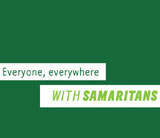Creativity with a cause
Charities now demand top quality work that strengthens their brand, not half-baked freebies or style-over-content created to win awards.

Why do some consultancies charge for their work in the third sector while others don’t? Last September Agency Republic launched a new division that was specifically geared towards servicing charities. With no other sources of revenue, Social Republic charges for its work and justifies the fees by stating that more dedicated, specialist work will pay for itself. The market seems to embrace this theory, as the group has already secured accounts with Oxfam, Samaritans, Cancer Research UK and Friends Of The Earth.
However, there is another ethical perspective. Stocks Austin Sice does not charge for its work in the third sector. ‘For us it’s a matter of principle,’ explains managing director Jeremy Sice. ‘We maintain the same standards as we do with our corporate clients. We simply don’t charge them for it.’
Social Republic managing director Jane McNeil argues that charities have traditionally been under-serviced, either by data-driven direct marketing houses or by big ad agencies looking for creative awards with high profile, ‘worthy’ design work. ‘We’re taking a much more market- and client-focused approach,’ she says.
One point on which Social Republic and SAS agree is that charities demand the same quality of work as private sector clients. Major charities control revenues in the hundreds of millions and understand the importance of protecting their brands. Those seeking greater creative freedom are going to be disappointed.
‘All the traditional restraints of commercial clients apply,’ says Sice. ‘There is also the added pressure that mistakes will cost more than money – they could make an impact on the cause.’
Often politically sensitive, third sector organisations don’t require any persuading of the value of design and marketing. The market for staff in these disciplines has become increasingly competitive in recent years, with wages approaching those in the private sector.
More importantly, design consultancies pitching for third sector projects, paid or otherwise, must understand the changes and challenges facing modern charities. Many charities are moving their donor relationships on-line. For example, Readingroom has transferred the promotion and organisation of Cancer Research’s charity run, Race for Life on-line, saving £400 000 in admin costs.
On-line communications also allow charities to react immediately to events around the world. ‘We were once asked to produce something to support a petition against Israel regarding specific attacks, while they were happening,’ says McNeil.
‘It’s difficult to plan and resource, however, it’s very compelling to work in the context of the evening news,’ he adds.
A good indication of how fundamental design and communications have become to modern charities can be found in Karma Living – a charity that is run entirely by a full-service ad agency. Ominor launched Karma Living as a means to import African art produced in Namibia, Zimbabwe, Zambia, Tanzania and the Congo. The project showcases local artists, outlining their upbringing and how they learned their skills.
While O’Connor clearly launched Karma Living for the right reasons, it also makes Ominor a very exciting place to work. No contract, no big brand, but plenty of feel-good factor.
This fundamental benefit of third sector is very much evident in the success of Bristol-based E3 Media. The various charity projects it supports have undoubtedly strengthened the consultancy’s sense of personality. And this very real internal brand has been instrumental in poaching top players from London groups, such as Wesley Hogg, former creative director at Rufus Leonard. It has also inspired some unhealthy overtime, helping the consultancy grow around 100 per cent every year since 1998.
Sometimes seen as a soft touch or a ticket to industry awards, the primary value of third sector work is often overlooked. Consultancies that regularly work with charities know that it’s an unparalleled source of a subtle, but precious asset; the stuff that attracts the best staff, inspires their best work and holds the entire consultancy together; the stuff called spirit. And as Michael Moore might say, it beats paying for an executive binge in Barbados.
Charity design: a soft touch?
-
Post a comment



